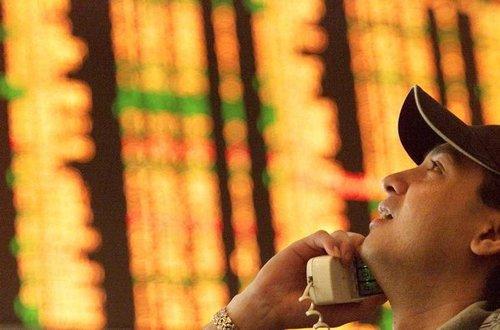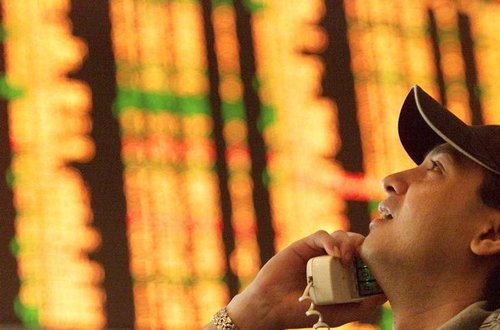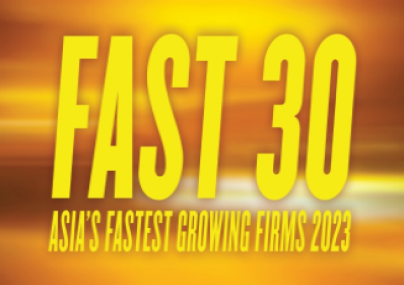
In August this year, Reach Energy Berhad, set up by veterans in Malaysia's oil and gas industry, made its market debut in Kuala Lumpur after completing a 750 million ringgit ($229 million) initial public offering. It was the country's largest ever IPO by a special purpose acquisition company (SPAC), dwarfing the initial share sales by two other local SPACs, Sona Petroleum Bhd and Cliq Energy Bhd, which raised between $100 million and $150 million last year, says Reuters.
SPACs are a unique type of company, and quite new to Asia. Known as high-risk, high-reward investments, they have no profits, revenues or assets. They attract investors who hope a team of experienced industry executives can translate seed money into profits down the road. And in the last two years, SPACs have been becoming increasingly prominent in Malaysia, one of the first Asian countries, along with South Korea, to embrace them.
In July 2011, Hibiscus Petroleum became Malaysia’s – and Southeast Asia's – first listed SPAC; it is now an oil and gas exploration firm after making acquisitions in the Middle East and Norway, according to Reuters. It was followed by the country’s second and third SPACs, Cliq Energy and Sona Petroleum in 2013, before Reach Energy made waves earlier this year. More are on their way: Directors of BP Healthcare, a diagnostics-to-laboratory medical group, plan to raise up to 500 million ringgit ($153 million) through a SPAC listing, according to Reuters, and a plantation SPAC called Chemara Palmea Holdings Bhd plans to raise 650 million ringgit ($198 million) in a listing. And Red Sena F&B Bhd looks to become the first SPAC in the food-and-beverage industry.
“At the time Hibiscus was listed, investors knew very little of SPAC other than what one may read on the Internet,” says Geraldine Chan, a partner at Zul Rafique & Partners, who is currently assisting a company in its application for a SPAC listing. “Now, after a few years and looking at how the share price of Hibiscus has done over the years, many investors have the same hopes that their initial investments would be translated into more money made and higher returns. With this hope, SPAC was able to garner high interest among investors, which translated into more money raised at their respective IPO. Thus, its recent popularity.”
Back to topMalaysia a hotbed
Chan says that there are many reasons why Malaysia is more conducive to SPAC listings than other country in the region. “We have written laws and knowledgeable regulators, large investments by the government into industries, and for the SPACs that have listed, they have benefited from the national oil company’s capital expenditure and robust growth,” she says. “Additionally, Malaysia had been home to the biggest IPOs in Asia in 2013, and in such an environment, raising capital for a SPAC has been easier than other jurisdictions.”
Wong Sue Wan, a partner with Wong & Partners, notes that investors are now becoming more comfortable and confident with the SPAC structure. “We would attribute this to the efforts of the Securities Commission Malaysia (SC) in promulgating a comprehensive regulatory framework to make Malaysia a conducive place for investors to invest in SPACs,” she says. “In Malaysia, the SC has demonstrated that it is conscientious in protecting investors’ interests. This was evident when the SC revised its guidelines in December 2013 to provide for additional safeguards to protect investors' interests.”
Wong adds that applications by potential SPACs have also been subject to close scrutiny to weed out applicants without a strong management track record and those with limited ability to generate returns for its shareholders. “The fruits of the SC's efforts can be seen when institutional investors such as Lembaga Tabung Haji, CIMB-Principal Asset Management Bhd, Hong Leong Asset Management and Norway's sovereign wealth fund invested in the latest SPAC in Malaysia, Reach Energy Berhad,” she says.
Back to topRegulatory safeguards
But make no mistake, SPACs are risky. In the United States, half of the SPACs launched in the past decade have failed to complete an actual acquisition and posted negative annual returns, according to Reuters. South Korea, the only other established market for such products, saw a spurt of listings and a surge in prices in 2010, with Daewoo Securities Green Korea SPAC and Mirae Asset No. 1 SPAC, the first two listed, nearly doubling in price within weeks of their IPOs. But SPAC issuances in that country soon ground to a halt as prices crashed and companies delisted.
Malaysia is doing its best to make sure the best of SPACs make it to the market by setting strict rules on them. Regulators have rejected a number of applications, for firms ranging from palm oil to healthcare, as their management teams lack a track record and the ability to generate returns for shareholders.
Wong says that the SC has had the benefit of studying why the SPACs launched in the U.S. and South Korea were not successful, and has come up with its own tailored regulatory framework to ensure that the interests of investors are safeguarded and the risks are mitigated. “Firstly, the SC reserves the right to determine the suitability of listing of a SPAC and to this end, they have tightened their review process,” she notes. “Secondly, the SC has also demonstrated, based on its revision to its guidelines in December 2013, that it is willing to and will continue to evolve to ensure that the interests of investors are safeguarded in order to enhance the competitiveness of the Malaysian capital market.”
Chan lauds the regulators for reacting with caution to SPACs’ applications for listing, and also rejecting SPAC applications if they weren’t convinced that it would be in the best interest of the investing public. “The laws evolved as the SPAC business evolved and so for the time being, not much may be done till the next learning experience,” she says. “However, it must be emphasised that to date, regulators have been most vigilant in their assessment of the business plan put across by the promoters of a SPAC and the manner in which promoters identify the assets for their Qualifying Acquisition (QA).”
She notes that regulators are diligent and take extra steps in ensuring that after the QA, the management of a SPAC has strategies in place to continue growth and the business remains profitable.
When it comes to the SC’s powers though, Wong calls for balance. “While the SC's broad discretion – for example, in deciding on an asset and structure of QA – may seem reassuring to an investor that their interests are safeguarded, the flip side is that this may be invasive and disruptive to certain commercial decisions which may be best left to the management of a SPAC to determine,” she says. “Ultimately, a fine balance between protecting the interests of investors and leaving certain matters must, therefore, be struck to ensure that the Malaysian capital market is competitive.”
Back to topSet to continue
Chan believes that the interest in SPACs will continue for the next couple of years at least. “Malaysia has a large pool of talent and not just one industry which a SPAC may start off,” she says. “There may be a SPAC each for these industries - education, healthcare, food, agriculture, solar energy - yet.”
While noting that it is still too early to form a conclusive view, Wong says that whether interest in SPACs will continue will depend on the track record of SPACs. “The fact that Hibiscus Petroleum Bhd is now starting to have a positive cash flow, and that the SC has demonstrated that it is a sophisticated regulator and that it is willing to continue to take steps to ensure that the interests of investors are safeguarded, are promising indicators,” she notes.
Back to top



